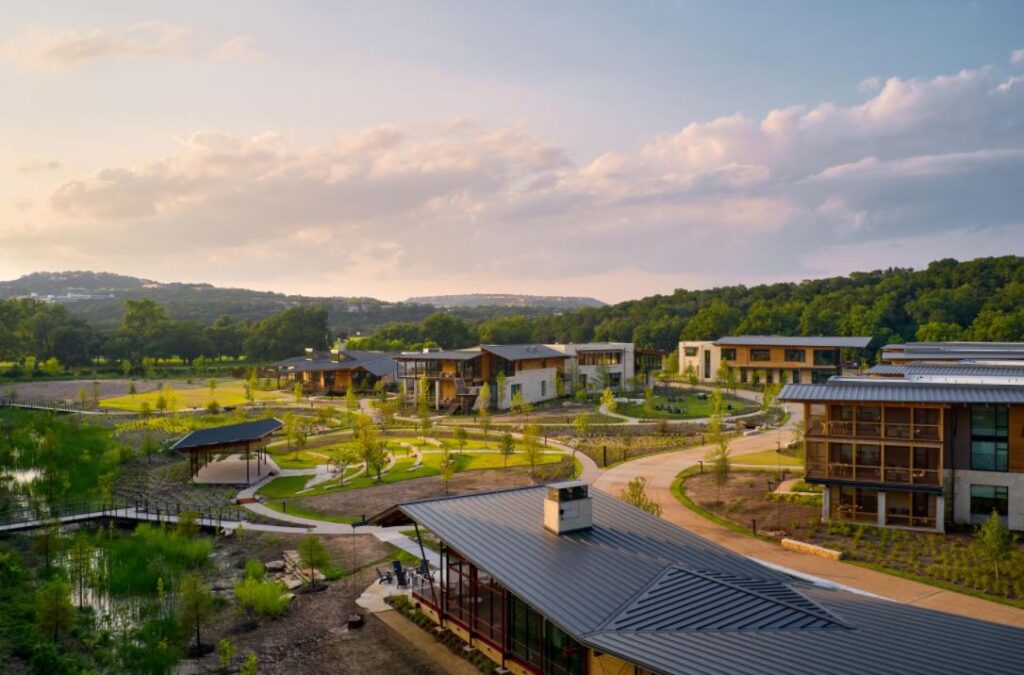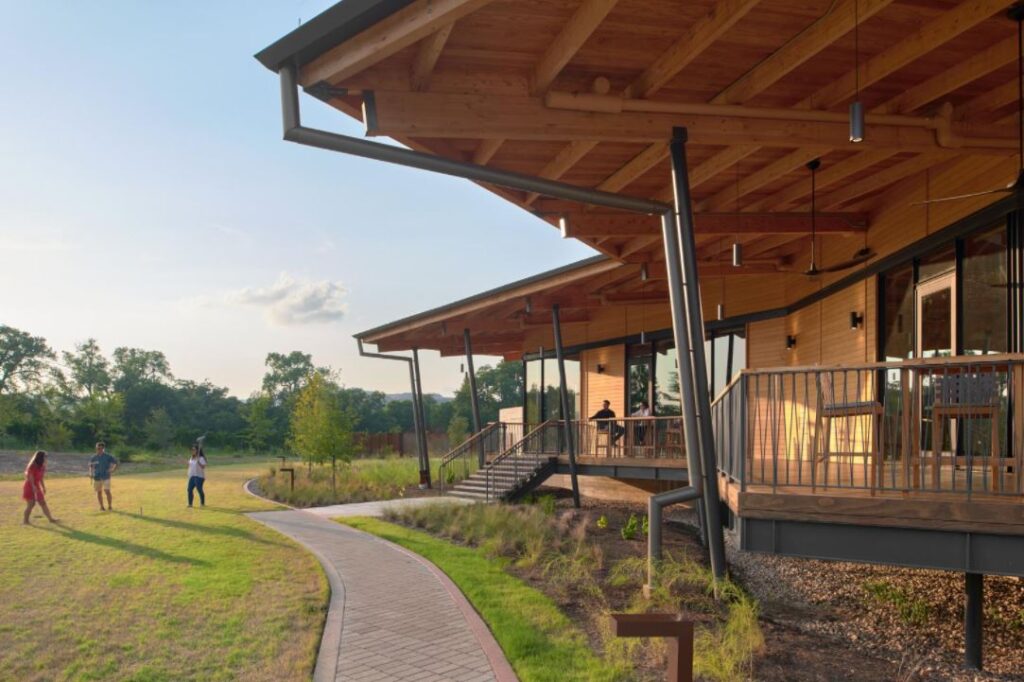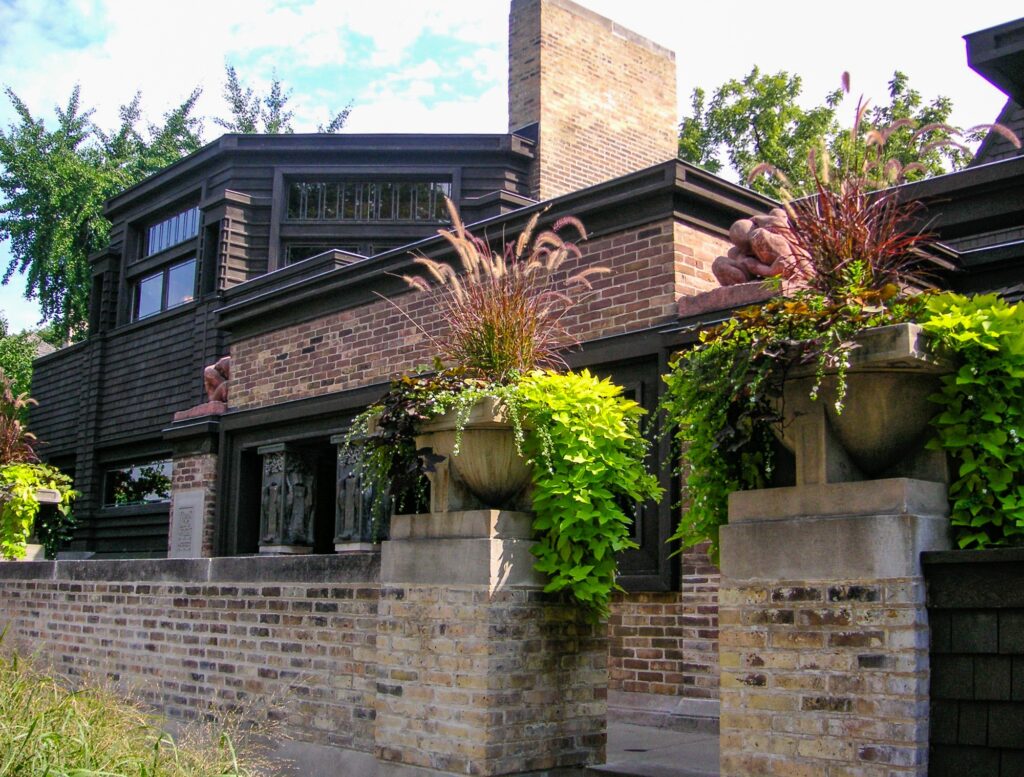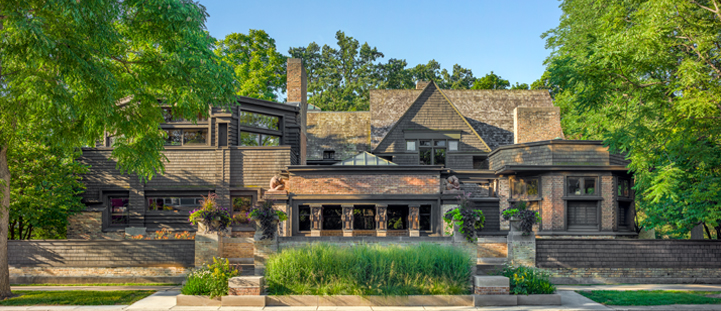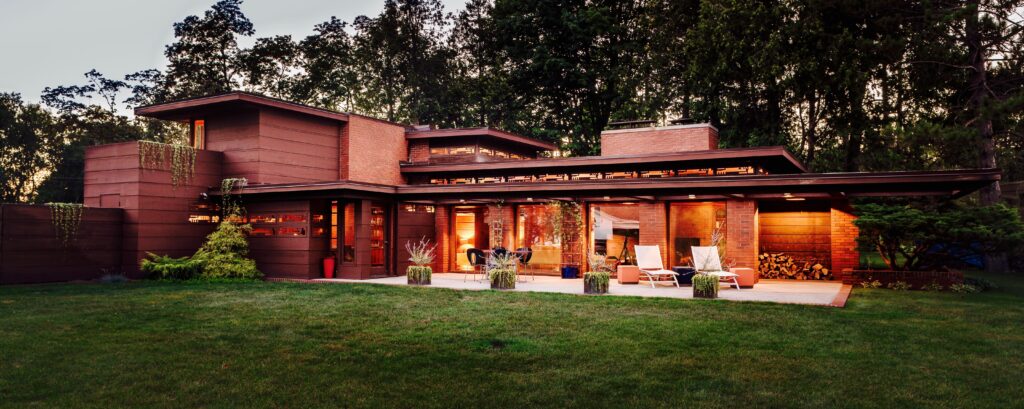The Wayne Lyman Morse United States Courthouse was designed and built by Thomas Mayne and his firm Morphosis in 2004. It was the hope of Mayne and his firm to break away from the traditional designs of courthouses in America that often came off as monotonous and simple. Mayne focused on giving the courthouse a modern design that reflected the importance of the decisions and proceedings that occurred behind the walls. He did this by placing the courtrooms so that they appeared to float around the building instead of the traditional model which was to hide them away in simple office buildings. Steel surrounds the pavilions containing the courtrooms and this creates a visual appeal that fits right into the static nature of Eugene’s urban design. Views of the surrounding mountains allow people to see outside into the surrounding environment, unlike traditional designs that create a closed-off, isolated and intimidating presence. This allows for light to penetrate and pass through the building which reflects time passing by and the gravity of decisions made.
https://www.morphosis.com/architecture/2/

